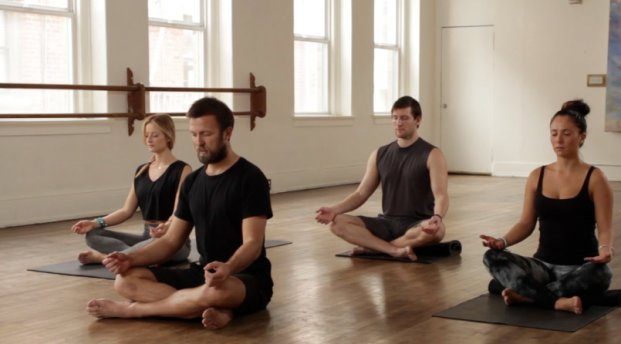I recently took a great group of yogis to Costa Rica on a weeklong retreat. Spending a week in paradise was an epic adventure, not only in the outward sense (ocean swimming, jungle trekking, etc) but also in the yogic journey we took together looking inward. With two sessions a day and a relatively small group compared to the size of my normal classes at home, we got to work intimately on all aspects of the practice together. Some came wanting to get stronger. Others came wanting more flexibility and freedom in their bodies. No matter the desire, we addressed it. Some workshops were met with great excitement (handstands) while others were met with some apprehension (backbends). However there was one class I taught that received by far the most resistance from all of my students and was easily the most difficult.
Before we started our meditation practice I tried to preface it with a 15 minute discussion about the benefits of training the mind. Being with mostly experienced yogis, I guessed that most of the ideas I brought forth were things they’d heard already. Still I tried to espouse the virtues of eliminating stress and wielding the mind as a tool instead of being a prisoner of it. I challenged our group to sit for a total of 45 minutes with eyes closed in a simple mindfulness meditation otherwise known as anapanasati. Afterward we discussed our experience. There were many tears. There were also many complaints. These were the first such reactions I had seen the entire week. For every physical challenge I had presented to them, my students had accepted it eagerly. But when it came to the task of quieting and controlling the mind, they rebelled.
This is something that I see more and more of as yoga evolves. In the mind-body discipline that we are working on, it is the body that is getting more and more of the attention while the mind runs free like an ill-behaved child. Yet we have all seen studies about the health implications of stress. More than 80% of disease today is directly or indirectly related to stress, which originates in OUR OWN MINDS. Yes it’s fun to do a handstand, but does it really matter if you can’t sit quiet with yourself? Stress isn’t something that happens to us, it is what we create. The cool thing is that we have a choice. When we meditate, we become much more capable of making the choice to stay calm peaceful, not submitting to the slavery of reactionary behaviors. The tension that results from a mind gone awry can be felt in our bodies too. How productive is it to release tension on your mat only to accumulate more of it as soon as you finish practicing?
After we finished our meditation practice and discourse, I left the students with a suggestion to incorporate a daily meditation, of any length, into their lives. At the end of our retreat when I had a chance to ask students what it is that they felt was the most important lesson they learned that week, I was surprised to hear so many of them mention meditation. When I think about it more, I myself had the same reaction when I was introduced to sitting still and turning inward. My first instinct was to run and avoid. I was afraid of what lay in the depths of my mind. However once I started and realized how powerful meditation could truly be, it is something that I’ll never let go of. Yes, of course it is nice to train the body; it is our temple. But without any sort of discipline for the mind, I doubt that a truly liberated and peaceful existence will ever come to be.


Write Your Comment
Leave a comment